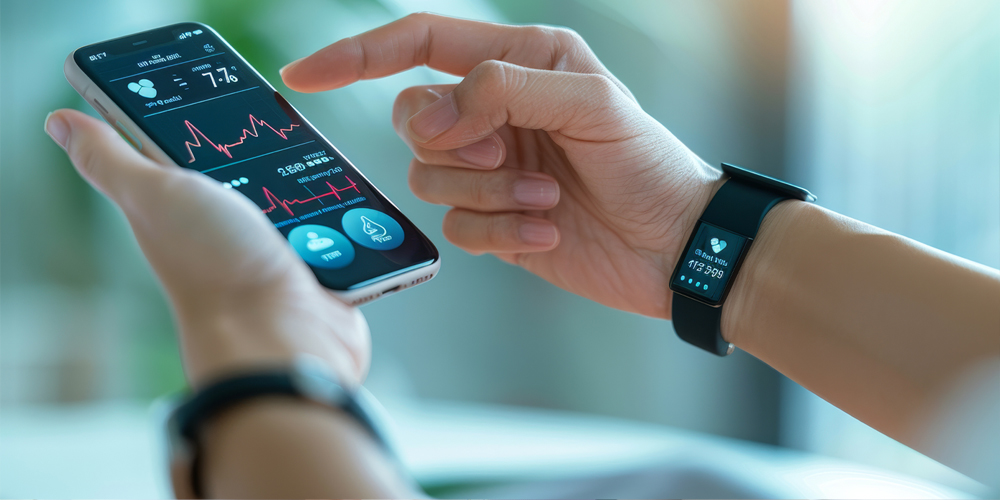Revolutionizing Wellness: The Impact of Wearable Fitness Trackers
In recent years, the world has witnessed a significant shift in how individuals monitor their health and fitness. One of the key players in this transformation has been the advent of wearable fitness trackers. These devices have changed the way we approach personal health by providing real-time data and insights. This article explores the evolution, benefits, and impact of wearable fitness trackers on our daily lives.
The Evolution of Wearable Fitness Technology
The journey of wearable fitness technology began in the early 2000s. At that time, device manufacturers focused on simple pedometers, which could count steps and estimate distance. As technology advanced, so did these devices. Fast forward to today, and we have sophisticated gadgets capable of monitoring heart rates, sleep patterns, and even blood oxygen levels.
Early Innovations and Breakthroughs
In 2009, Fitbit released its first tracker, a simple clip-on device. It was a turning point in the fitness industry. With features such as step counting and distance tracking, it caught the public’s attention. Over the years, Fitbit expanded its product line to include a range of health metrics, making it a household name in fitness technology.
Following Fitbit’s lead, several companies entered the market. Brands such as Garmin, Apple, and Samsung began to compete. They introduced devices with built-in GPS, heart rate monitors, and advanced fitness tracking capabilities. These innovations helped wearables become mainstream. Today, they are an essential part of many people’s fitness routines.
Benefits of Wearable Fitness Trackers
Wearable fitness trackers provide users with numerous benefits. These advantages go beyond mere step counting. They contribute to improved physical and mental well-being. Here are some of the significant benefits that these devices offer:

1. Real-Time Activity Monitoring
One of the standout features of wearable fitness trackers is their ability to monitor activities in real-time. Users can see how many steps they have taken, how many calories they have burned, and even how long they have been active throughout the day. This immediate feedback motivates individuals to stay active and reach their goals.
2. Sleep Tracking for Better Rest
Many modern fitness trackers monitor sleep patterns. They analyze sleep quality and duration, helping users identify irregularities. Understanding sleep habits is crucial for overall health. With this information, individuals can make necessary adjustments to improve their sleep quality. Better sleep leads to better recovery, which is essential for fitness progress.
3. Heart Rate Monitoring
Heart rate monitoring is another critical feature. Users can track their heart rates during workouts and throughout the day. This data helps individuals understand their fitness levels. Additionally, it enables users to train in different heart rate zones for optimal results. Knowing when to push harder or ease up is vital for safe and effective workouts.
4. Goal Setting and Progress Tracking
Wearable fitness trackers allow users to set personal goals, such as achieving a specific number of steps or burning a certain number of calories. The devices track progress and provide feedback. This feedback can be incredibly motivating. When users see their progress, they are more likely to stay committed to their fitness journey.
5. Social Connectivity and Support
Many fitness trackers come with built-in social features. Users can connect with friends and family to share achievements and challenge each other. This social aspect adds a layer of accountability and motivation. Community support plays a crucial role in maintaining fitness habits and achieving goals.
Challenges and Considerations
While wearable fitness trackers offer numerous benefits, there are also challenges to consider. It’s essential to acknowledge these potential downsides to make informed decisions.
1. Dependency on Technology
Some individuals become overly dependent on their devices. They may focus too much on metrics rather than listening to their bodies. It’s important to balance technology use with intuitive body awareness. Applying common sense and staying attuned to physical feelings can help prevent this issue.
2. Data Accuracy and Privacy Concerns
Not all fitness trackers provide accurate data. Variations in how devices measure heart rate, calories burned, and steps taken can lead to misleading information. Users should recognize this potential discrepancy. Furthermore, privacy concerns about sharing data with third-party apps and companies have emerged. It’s crucial to stay informed about privacy settings and data sharing agreements.
3. Wearability and Comfort
While many wearables are designed for comfort, some individuals may find certain designs bulky or uncomfortable to wear all day. Finding the right fit is essential for enjoying the benefits without discomfort. Users should explore options before committing to a specific device.
Popular Wearable Fitness Trackers on the Market
Several devices have gained popularity in the world of wearable fitness technology. Each tracker has unique features catering to different user needs. Below are some of the most popular options:
1. Fitbit Charge 5
The Fitbit Charge 5 is a versatile device that offers an array of health metrics. It includes built-in GPS, heart rate monitoring, and sleep tracking. Users appreciate its user-friendly interface and compatibility with various apps.
2. Apple Watch Series 8
The Apple Watch Series 8 combines fitness tracking with smart technology. Besides activity tracking, it provides notifications, music playback, and integration with Apple Health. It’s a favorite among those who seek both fitness and technology in one device.
3. Garmin Venu 2
The Garmin Venu 2 is designed for fitness enthusiasts. It offers advanced features such as comprehensive workout tracking and built-in GPS. It is particularly appealing to athletes who want detailed performance metrics.

4. Samsung Galaxy Watch 4
The Samsung Galaxy Watch 4 features health tracking and an array of smart capabilities. It includes body composition analysis, which is unique among competitors. Users find it useful for both fitness and everyday tasks.
Future Trends in Wearable Fitness Technology
The future of wearable fitness technology looks promising. Innovations continue to emerge, making fitness tracking even more comprehensive.
1. Integration with Artificial Intelligence
AI is becoming a significant part of fitness trackers. Devices may analyze data more effectively, offering personalized workout plans and health insights. This integration promises to enhance user experiences.
2. Advanced Health Monitoring
Future devices may incorporate advanced health monitoring features. This includes tracking blood glucose levels, hydration status, and more. Such innovations could transform how we manage chronic conditions and overall health.
3. Enhanced Data Privacy Measures
As concerns about privacy grow, companies are working on improving data security. Enhanced measures can reassure users about sharing their information. Transparency about data usage will become increasingly crucial.
Conclusion
In conclusion, wearable fitness trackers have revolutionized the way we approach health and fitness. They offer a wealth of benefits, helping users monitor their activity, sleep, and overall wellness. While challenges exist, ongoing advancements and innovations promise a bright future for this technology. As users continue to embrace these devices, they will likely play an essential role in promoting healthier lifestyles and enhanced well-being. With such a wide range of options available, individuals can find the ideal wearable fitness tracker to support their health journey.










